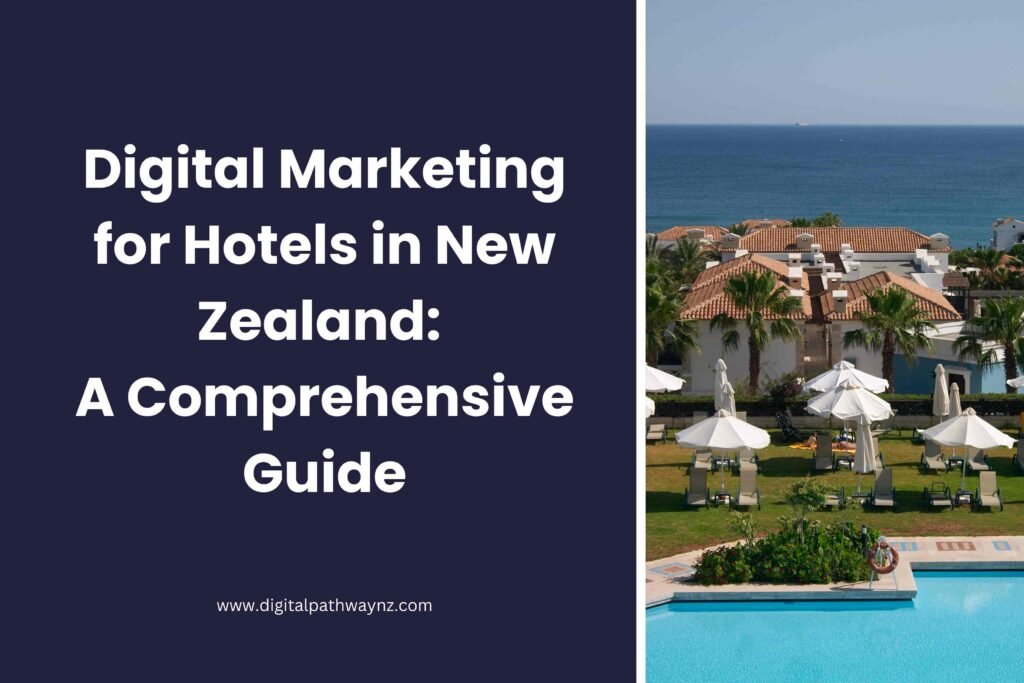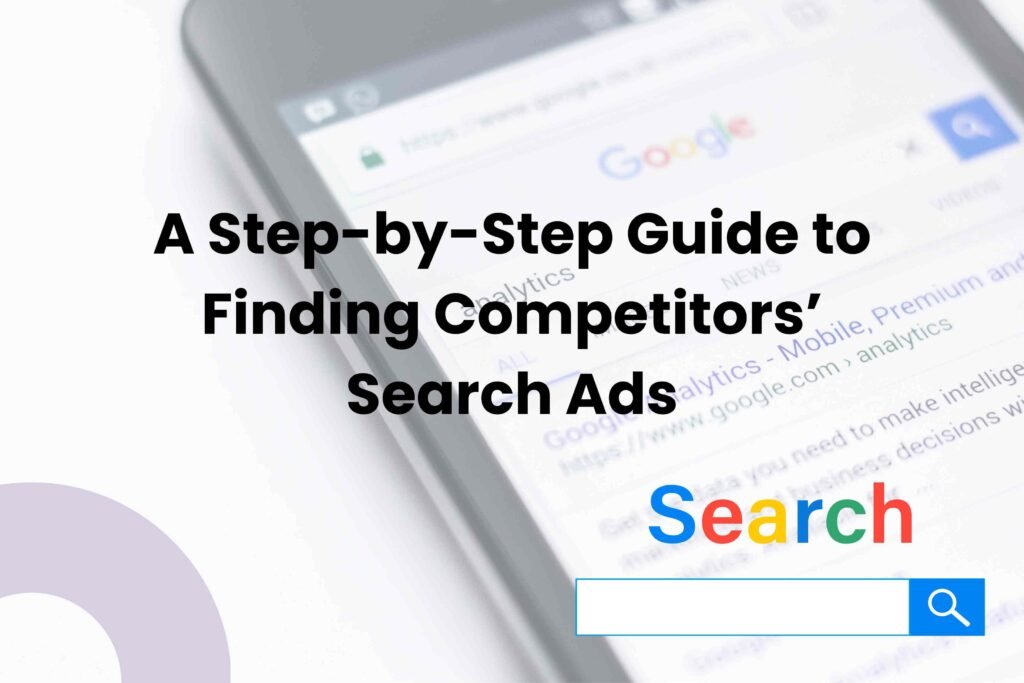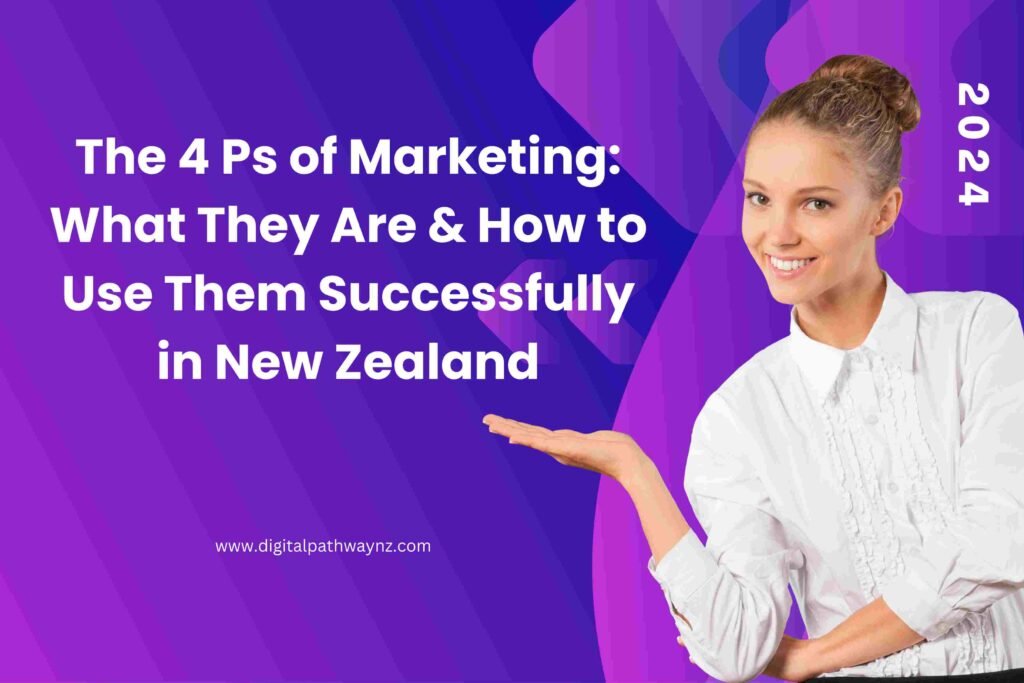Content marketing has become a vital component of any successful digital marketing strategy. In New Zealand, where businesses are increasingly competing for consumer attention, content marketing offers a way to engage, inform, and build trust with your target audience. This guide will walk you through what content marketing is, how it works, why it’s essential, the top platforms and formats, and how to craft a content marketing strategy tailored to the New Zealand market.
- What is Content Marketing?
- How Does Content Marketing Work?
- Why is Content Marketing Important?
- Top Platforms and Formats for Content Marketing
- Content Marketing Strategy for Brand Building
- Content Marketing Strategy for Lead Generation
- Content Marketing Strategy for SEO
- Content Marketing Strategy for Customer Retention
- Content Marketing Strategy for E-commerce
- Conclusion
What is Content Marketing?
Content marketing is the process of creating, publishing, and distributing valuable, relevant, and consistent content to attract and retain a clearly defined audience. The ultimate goal is to drive profitable customer action, whether it’s making a purchase, signing up for a newsletter, or engaging with your brand in other meaningful ways.
Unlike traditional advertising, content marketing focuses on providing value to the audience, building trust, and establishing your brand as an authority in your industry. Content can take many forms, including blog posts, videos, infographics, podcasts, social media updates, and more.
How Does Content Marketing Work?
Content marketing works by aligning your content with the needs and interests of your target audience. Here’s how the process typically unfolds:
- Audience Research: Understand who your target audience is, what their pain points are, and what content they consume. Tools like Google Analytics and Facebook Insights can help you gather this data.
- Content Creation: Develop content that addresses the needs and interests of your audience. This could be educational, entertaining, or inspirational content that aligns with your brand’s voice and values.
- Content Distribution: Once created, your content needs to be distributed across the right channels. This could include your website, social media platforms, email newsletters, or other digital channels.
- Engagement and Interaction: Encourage your audience to engage with your content by asking questions, sharing their thoughts, or participating in discussions. This engagement helps build a community around your brand.
- Measurement and Optimization: Use analytics tools to measure the performance of your content. Look at metrics like page views, time on page, social shares, and conversion rates to determine what’s working and where improvements can be made.
Why is Content Marketing Important?
Content marketing offers several key benefits that make it essential for businesses in New Zealand:
- Builds Trust and Authority: By consistently providing valuable content, you establish your brand as an authority in your industry. This builds trust with your audience, making them more likely to choose your products or services.
- Enhances SEO: Quality content is a critical component of search engine optimisation (SEO). Regularly publishing optimised content can help improve your website’s visibility on search engines, driving more organic traffic.
- Generates Leads: Content marketing can be a powerful lead generation tool. By offering valuable content, you can attract potential customers and encourage them to take action, such as signing up for a newsletter or requesting more information.
- Increases Engagement: Engaging content can capture your audience’s attention, encouraging them to interact with your brand, share your content, and become advocates for your business.
- Cost-Effective: Compared to traditional advertising, content marketing is often more cost-effective. It offers long-term benefits, as content continues to attract and engage audiences over time.
Top Platforms and Formats for Content Marketing
When it comes to content marketing in New Zealand, certain platforms and content formats are particularly effective:
- Blogs: Blogging remains one of the most popular forms of content marketing. Regular blog posts on your website can drive traffic, improve SEO, and establish your brand as an industry leader. Tools like WordPress make it easy to start a blog.
- Social Media: Platforms like Facebook, Instagram, LinkedIn, and YouTube are crucial for distributing content and engaging with your audience. Tailor your content to the platform’s strengths—videos for YouTube, images for Instagram, and professional content for LinkedIn.
- Email Newsletters: Email marketing is an effective way to deliver personalized content directly to your audience’s inbox. Use platforms like Mailchimp to create and distribute newsletters.
- Videos: Video content is increasingly popular, especially on platforms like YouTube and Facebook. Videos can be used for tutorials, product demos, customer testimonials, and more.
- Podcasts: Podcasts are a growing trend in New Zealand, offering a way to reach audiences through audio content. They are ideal for sharing expert interviews, industry insights, and stories that resonate with your audience.
Content Marketing Strategy for Brand Building
Content marketing plays a crucial role in building and enhancing your brand’s presence in the market:
- Define Your Brand Voice: Your content should reflect your brand’s voice and personality. Whether it’s professional, casual, or quirky, consistency is key to building brand recognition.
- Storytelling: Use storytelling to connect with your audience on an emotional level. Share your brand’s journey, values, and mission through compelling narratives that resonate with your audience.
- Visual Identity: Consistent use of colors, fonts, and imagery across all content helps reinforce your brand’s visual identity. This consistency makes your brand easily recognisable.
- Content Themes: Develop content themes that align with your brand’s core values and messaging. These themes can guide your content creation efforts, ensuring everything you publish supports your brand strategy.
- Engage with Your Audience: Encourage interaction with your content by asking questions, responding to comments, and creating content that invites participation. Building a community around your brand strengthens brand loyalty.
Key Metrics for Brand Building:
- Brand Awareness: Measure the reach of your content and how many new people are discovering your brand.
- Engagement Rate: Track likes, shares, comments, and other forms of interaction to gauge how your audience is engaging with your content.
- Brand Mentions: Monitor how often and where your brand is mentioned online, including on social media, blogs, and forums.
- Sentiment Analysis: Analyze the tone of the conversations around your brand to understand public perception and make necessary adjustments.
Content Marketing Strategy for Lead Generation
When the goal is to generate leads, content marketing should be focused on driving conversions:
- Create Gated Content: Offer valuable content like eBooks, whitepapers, or guides in exchange for contact information. This helps you build a list of qualified leads.
- Optimize Landing Pages: Ensure your landing pages are optimized for conversions with clear CTAs, relevant content, and a user-friendly design.
- Use CTAs Effectively: Incorporate strong, clear calls to action (CTAs) in your content to guide readers toward the next step, whether it’s signing up for a newsletter or requesting a quote.
- Nurture Leads with Email: Use email marketing to nurture leads through the sales funnel. Send personalized content that addresses their needs and encourages them to take the next step.
- Leverage Social Proof: Include customer testimonials, case studies, and reviews in your content to build trust and encourage prospects to convert.
Key Metrics for Lead Generation:
- Conversion Rate: Track the percentage of visitors who complete a desired action, such as filling out a form or downloading a resource.
- Cost Per Lead (CPL): Measure how much you’re spending to acquire each lead through your content marketing efforts.
- Lead Quality: Assess the quality of leads generated by analysing their engagement with your content and their fit with your ideal customer profile.
- Customer Lifetime Value (CLV): Track the long-term value of leads generated through content marketing to ensure your strategy is delivering a strong ROI.
Content Marketing Strategy for SEO
Content marketing and SEO go hand in hand. A well-executed content marketing strategy can significantly improve your search engine rankings:
- Keyword Research: Use tools like SEMrush and Ahrefs to identify keywords relevant to your industry and audience. Incorporate these keywords naturally into your content.
- On-Page SEO: Optimise each piece of content with on-page SEO best practices, including meta descriptions, header tags, and internal linking.
- Content Clusters: Organise your content into clusters around core topics. This structure helps search engines understand the relationship between different pieces of content, boosting your site’s authority on those topics.
- Regular Updates: Keep your content fresh by regularly updating old posts with new information, statistics, and insights. Search engines favor content that is regularly updated.
- Link Building: Earn backlinks from reputable websites by creating high-quality, valuable content that others want to reference and share.
Key Metrics for SEO:
- Organic Traffic: Measure the number of visitors coming to your site through organic search.
- Keyword Rankings: Track where your site ranks for target keywords and how these rankings change over time.
- Bounce Rate: Analyze the percentage of visitors who leave your site after viewing only one page. A lower bounce rate indicates more engaging content.
- Backlinks: Monitor the number and quality of backlinks to your content, as they significantly impact your SEO performance.
Content Marketing Strategy for Customer Retention
Content marketing is also a powerful tool for retaining existing customers and encouraging repeat business:
- Educational Content: Provide content that helps your customers get the most out of your products or services. This could include how-to guides, tutorials, FAQs, and webinars that address common questions or challenges.
- Exclusive Offers and Content: Reward your existing customers with exclusive content, such as early access to new products, special discounts, or members-only newsletters. This not only encourages loyalty but also makes your customers feel valued.
- Customer Success Stories: Share case studies or success stories from your existing customers. Highlight how they have benefited from your products or services. This not only validates their decision to choose your brand but also serves as inspiration for others.
- Engagement Through Social Media: Use social media to maintain ongoing relationships with your customers. Respond to their comments, engage in discussions, and share content that resonates with their interests. Social media is an excellent platform for building a community around your brand.
- Feedback Loops: Encourage customers to provide feedback on your products, services, and content. Use this feedback to create content that addresses their concerns and meets their needs, fostering a sense of collaboration and continuous improvement.
Key Metrics for Customer Retention:
- Customer Retention Rate: Measure the percentage of customers who continue to do business with you over a given period. A higher retention rate indicates successful engagement and customer satisfaction.
- Customer Lifetime Value (CLV): Track the total value a customer brings to your business over the entire duration of their relationship with you. Content marketing can help increase CLV by encouraging repeat purchases and deeper engagement.
- Churn Rate: Monitor the rate at which customers stop doing business with you. A lower churn rate indicates better customer retention strategies.
- Customer Engagement: Assess how often and in what ways your customers interact with your content. High engagement rates suggest that your content is resonating well with your audience.
Content Marketing Strategy for E-commerce
Content marketing is especially valuable for e-commerce businesses looking to attract, convert, and retain customers:
- Product Descriptions and Pages: Optimize your product descriptions and pages with SEO-friendly content that highlights the benefits and features of your products. Include high-quality images, videos, and customer reviews to enhance the shopping experience.
- Blog Posts and Buying Guides: Create blog posts, buying guides, and comparison articles that help customers make informed decisions. Content that educates your audience about your products can drive traffic and conversions.
- Email Campaigns: Use email marketing to share product updates, special promotions, and personalised recommendations based on customer behavior. Regularly sending valuable content can increase customer loyalty and sales.
- Social Proof and User-Generated Content: Leverage user-generated content, such as customer photos and testimonials, to build trust and encourage others to make a purchase. Feature this content on your product pages, social media, and email campaigns.
- Seasonal and Themed Content: Create content around seasonal events, holidays, or trending topics to capture the interest of potential buyers. This can include gift guides, seasonal promotions, or themed product collections.
Key Metrics for E-commerce:
- Conversion Rate: Track the percentage of visitors who make a purchase after interacting with your content. This is a critical metric for assessing the effectiveness of your content marketing efforts.
- Average Order Value (AOV): Measure the average amount spent by customers per transaction. Content marketing strategies that encourage upselling and cross-selling can help increase AOV.
- Cart Abandonment Rate: Monitor the percentage of customers who add items to their cart but do not complete the purchase. Reducing cart abandonment through targeted content can significantly boost sales.
- Revenue Generated by Content: Analyze the direct impact of your content on revenue by tracking the sales generated from content-driven traffic and campaigns.
Conclusion
Content marketing in New Zealand offers businesses a powerful way to connect with their audience, build trust, and drive measurable results. Whether you’re focused on brand building, lead generation, SEO, customer retention, or e-commerce, a well-crafted content marketing strategy can help you achieve your goals.
By understanding the different aspects of content marketing—from choosing the right platforms and formats to crafting strategies tailored to your objectives—you’ll be better equipped to create content that resonates with your audience and drives success. Remember, content marketing is an ongoing process that requires continuous optimization, experimentation, and adaptation to changing market trends.
With the right approach, content marketing can become a cornerstone of your digital marketing efforts in New Zealand, helping you stand out in a competitive landscape and build lasting relationships with your customers.





